LordofUzkulak’s fanfics
[WHFB] Entering Zharr-Nagrund
“Get a move on ya laggards,” bellowed Hârzrazh Coalheart, hobbling up the stairs of the gatehouse to the battlements “I’ll not have those curs from the Outliers showing us up.” The despot wheezed stony breaths as he ascended the black stairs. The air inside the gatehouse was cool and comfortable, the temperature maintained by wards enscribed by the hands of apprentice daemonsmiths as part of their training and when he stepped across the threshold it felt like being hit in the face with a furnace; outside the heat was searing and the air carried a hit of ash no matter where you were. Coalheart smiled with pride seeing his warriors ranking up swiftly and neatly, their crimson scaled armour neatly polished and their hats sitting perfectly straight on their heads.
The dwarfs under his command comprised the garrison of the western tower of the Naggrund Gate, a might brass door standing betwixt two basalt ziggurats at the southern end of the fortress-city of Zharr-Naggrund. To the south, west and east stretched the Plains of Zharr, a vast desolate expanse dotted with towers, forts and ziggurats from which the lesser clans oversaw the toiling of innumerable slaves. To the north sat the city of Zharr-Naggrund, a hundred and twenty mile wide bowl at the centre of which stood Mingol Zharr-Naggrund, the immense tower that was the capitol and chief temple of the Dawi Zharr empire, less fortress than mountain in stature. Mingol Zharr-Naggrund was a colossal ziggurat carved from a single piece of obsidian sixty miles wide and sixty levels tall, each level one twelfth a mile in height and one mile wider than the level above. Some said that there were sixty more levels below ground, each growing as you descended at the same rate the above ground levels shrank, though Coalheart knew none that had gone beyond the twelfth (though each level being so vast it could contain multiple sub levels it was hard to judge how many levels you had actually descended). There was even a semi-heretical tale that deep within the bowls of Mingol Zharr-Naggrund dwelt Hashut himself, biding his time, sustained by the blood shed by slaves across the Plain of Zharr, waiting for the day spoken of in the Twelve Books of Prophecy bequeathed by Hashut to the Twelve Sons when the Dawi Zharr had pledged themselves to the Dark Father’s service in the Dark Times many millennia ago, though Coalheart placed no stock in it.
The top most level of Mingol Zharr-Naggrund was the Temple of Hashut, a mighty edifice of iron and bronze capped with a large, hollow brass bull which reared up above a fire pit that was consecrated each day by a gross of slaves, and never allowed to go out. To reach the temple there was one option; to ascend the most arduous road in the city by climbing one of the four steep staircases that rose from the ground to the top level in a single unbroken line and one of the trials required to become a priest in the Cult of Hashut was to climb by this route without faltering, rest or nourishment. There were other roads that went as far as the second highest level; the easiest was a broad road, wide enough for ten wagons to drive abreast, that wound in a spiral around the tower ascending in a series of ramps, one per level. Each level below the highest was mostly hollow, riddled with passages, halls and buildings worked into the stone of the ziggurat itself, but none of these levels above ground were restricted to the interior of the ziggurat; built on the ‘roof’ of each level were more buildings, towers, workshops and even smaller ziggurats, many serving as the family holdings of the city’s numerous clans, and some were set aside to house envoys from the Ogre tribes of the Mountains of Mourn or the human barbarians of the northern Wastes in an attempt to cow them at the sight of the might of the Dawi Zharr.
From the base of Mingol Zharr-Naggrund to the edge of the bowl which marked the city limits was a broad plain covered in a scattering of ziggurats, the private residences of the Sorcerer-Prophets which allowed them a semblance of privacy away from the main tower so that they could engage in study bereft of the stresses of Mingol Zharr-Naggrund. Fed by an ash fall every twelve years, this plain was fertile and had long been cultivated into gardens and plantations tended by the most trusted slaves of each estate. It was from here the best quality crops were harvested and sold in Mingol Zharr-Naggrund as delicacies. It was also here the River Ruin ran, entering the plain from the northernmost point, meandering to the base of Mingol Zharr-Naggrund where it was swallowed by an iron gate set in the side of the ground level and spewed out by another on the other side of the ziggurat’s base, whence forth it swung to the east and left the plain. The lands east of the river were the poorest soil wise and invariably the estates there belonged to those clans lowest in standing. As such a millennia or so ago, the ruling council had bought up most of the estates and set about transforming it into something more useful. New schools had been built to train beardlings in the art of war and some private academies had been founded entering on the arts rather than warfare in an attempt to revive the swiftly diminishing culture among the Dawi Zharr.
The grandest achievement of this was the Phlâzian Amphitheatre, built by Vezpâzan Plâzia, a mighty general of the time. The Amphitheatre was a vast, twelve-tiered, inverted ziggurat dug into the ground and tiled with black marble. So large was it that it could easily seat half the dwarves in Zharr-Naggrund, and many private boxes lined the arena. A sophisticated system of trapdoors were hidden under the area floor allowing slaves to be brought up from the pits below, or for sections to be raised or lowered transforming the lay of the land. There were even powerful pumps that enabled the arena to swiftly be filled and emptied with water so naval battles could be simulated.
At the furthest extremes of the Eastern plain, in its north-eastern corner was a, relatively, small temple complex. Though the Dawi Zharr as a race as a whole were dedicated to Hashut, they were not so foolish as to ignore the other Chaos gods and it was here that they were acknowledged. The complex consisted of eight squat ziggurats tended by those few dwarfs that pledged their service to the other gods; these extremists were regarded as renegades and were only permitted to leave the complex to march to war and on special occasions at special dispensation from the ruling council of Zharr-Naggrund. Each temple was possessed of its own quirk which reflected the god it was dedicated to; the six tiers of Slaanesh’s was wreathed in incense, its halls carved to resonated and magnify the sounds of the debaurcheries held within; Nurgle’s was carved from wood, rotten with age and each of its seven levels slick with mould and fungii; the eight brass levels of Khorne’s were slick with blood, its sides carved into leering skulls; Tzeentch’s was blown from a single piece of glass, multi spectral fires flickering within and a different coloured gem encrusting each of its nine levels; Malal’s, built from white and black blocks of marble, was constantly being rebuilt, only to tear itself down on the heads of its adherents; Necoho’s stood silent and empty, each person to cross the threshold struck down by a single bolt of lightning; Zuvassin’s was incomplete, each brick set slightly askew; finally there was the temple of the Horned Rat, who had no adherents among the Dawi Zharr, instead it was used as a breeding centre for skaven slaves, many of whom were not destined for the slave fields, nor the mines or workshops, but rather the dinner table as basic fare for the other slaves.
At the edge of the plain that was counted as part of the city and before the Plains of Zharr were the city walls. Despite their name they were not true walls. Rather the ‘wall’ consisted of broken ground, huge shards of rock and tumbled monolith spearing the sky away from the city out into the Plains of Zharr. Legend had it when the ancestors of the Dawi Zharr had first pledged themselves to the Dark Father he had stamped his hoof on the earth and had declared that there was where they we’re find their new home. The force of the stomp had shattered the ground in what was now the Plains of Zharr and the hoof print had formed a natural bulwark within which Mingol Zharr-Naggrund had been raised. The cyclopean shards ringed the tower and the fertile plain around it, but it was not a perfect ring, and actual walls, many yards high had been built to plug the gap. Every twelve miles stood a tower, fort or ziggurat to watch over the walls, and halfway between each the Dawi Zharr had erected statues so large they dwarfed even the mighty K’daai Destroyers. Each statue was in the shape of Taurii, Lammasu or a daemon and each constant vomited lava drawn up from the depths of the earth into channels carved into the Plain of Zharr which fed a moat, a mile wide which encircled the city walls. The moat could only be crossed in three places, a half mile wide bridge which lead to the only gatehouse in the walls, or by one of the two aqueducts that allowed the River Ruin to pass through the city.
Coalheart raised a farglass to his eye, an ingenious device created by Fûggîth, a Daemonsmith of his clan. The farglass appeared to be a simple monocle, but by twisting the rim, which consisted of a two dozen rings, gently the wearer could bring into focus object far away without the need for bulkier equipment as was the norm. Peering through it, he brought into focus the forces arrayed on the other side of the bridge. Today began the Father’s Quarter, a holy period of twelve weeks that only occurred every seven score and four years and to celebrate there was to be a procession. In camps outside the city waited delegations from all the holds of the Dark Lands and even a few from outposts beyond. Coalheart watched as they drew up in the correct order as had been decided by a committee of Sorcerer-Prophets twenty-four years ago. Coalheart could see the reds and blacks of the Plainsland holds, the gold and bone of Uzkulak, the tower shields bearing an iron gate as a device of the garrison of the Gates of Zharr, the ornate hats and jewelled rings of the Tower of Gorgoth and even, at the rearmost and most shameful position in the procession, the faceless masks of the Infernal Guard of the Black Fortress.
Coalheart turned to the sundial next to him, waiting for the appointed hour. An eternity seemed to crawl by until finally it was time. Coal heart raised a gloved hand and a dozen musicians raised bronze horns to their lips. With a swift motion he dropped his hand and the trumpets blew deeply, the blaring of their horns resonating over the Plains of Zharr, striving to outdo the horns of the Eastern gate tower. In answer, the procession blew their own horns and beat their drums in co-ordination. As the answer died down the gatehouse garrisons trumpeted again. Fifty-nine times the exchange happened, each time growing in strength until on the sixtieth the greatest trumpet sounded. From high atop Mingol Zharr-Naggrund the great bronze bull bellowed, a rolling thunder that could be heard all across the Plains of Zharr. At that signal, the gates ground open and the procession set forth.




































![TerrainFest 2024! Build Terrain With OnTableTop & Win A £300 Prize [Extended!]](https://images.beastsofwar.com/2024/10/TerrainFEST-2024-Social-Media-Post-Square-225-127.jpg)





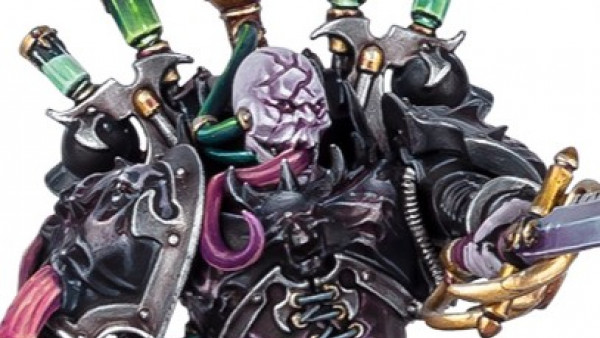

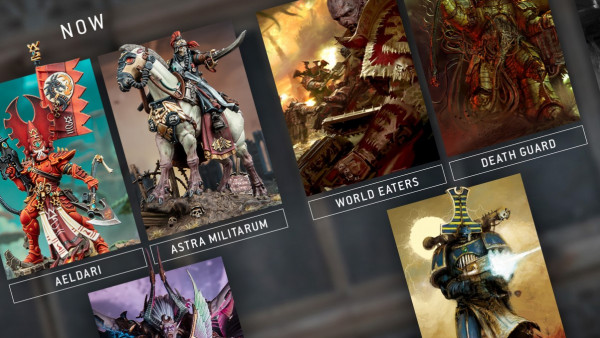
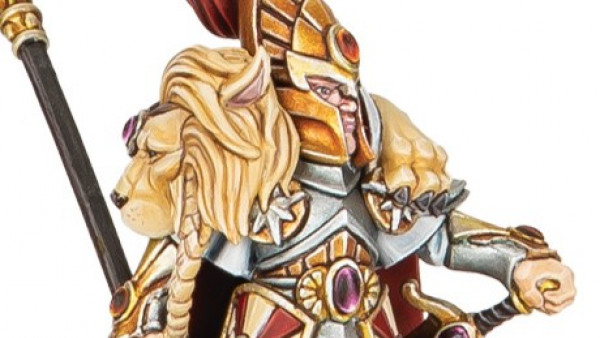
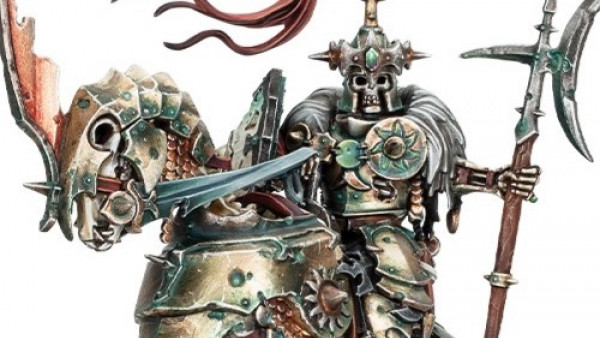

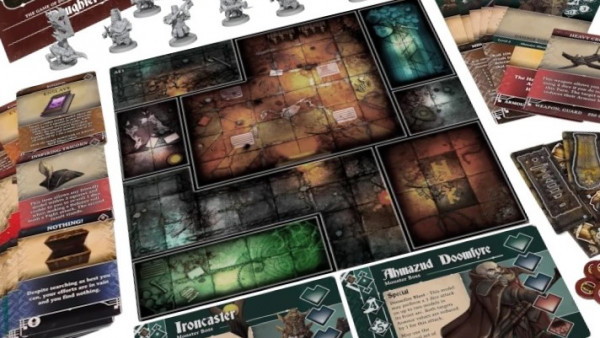

























Leave a Reply